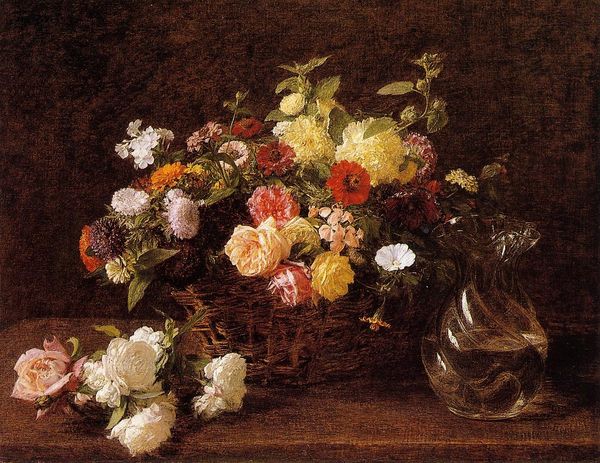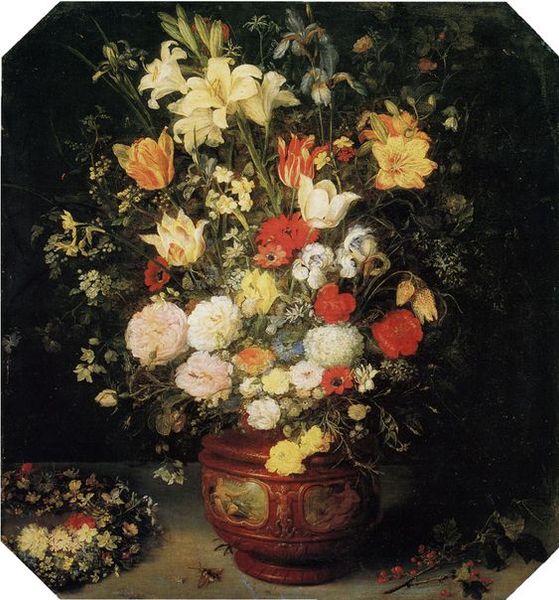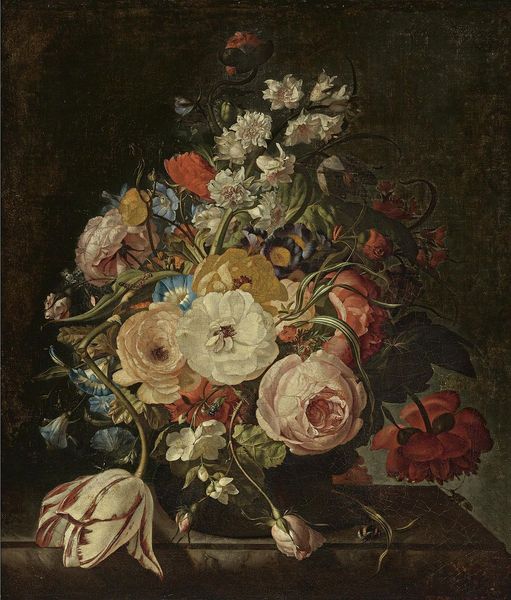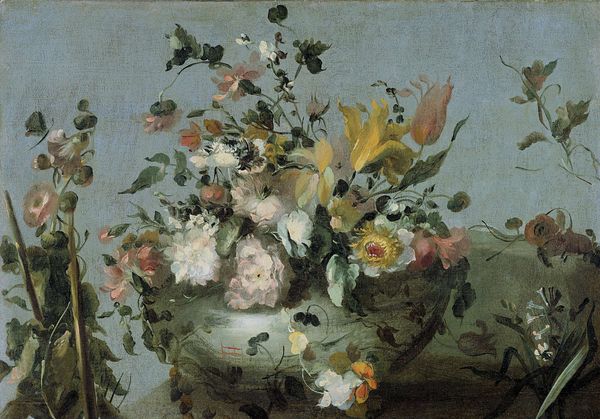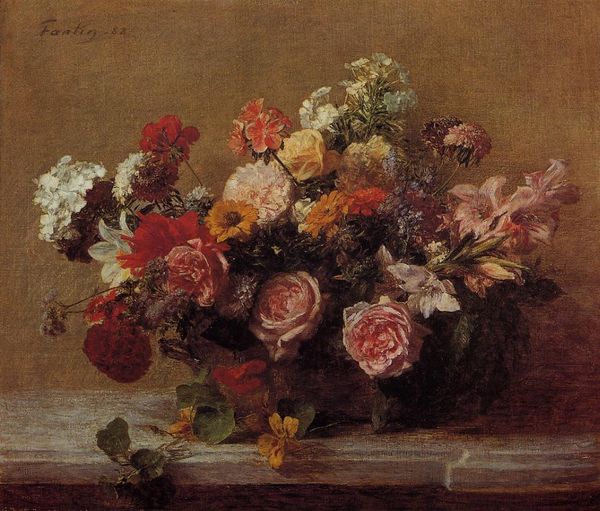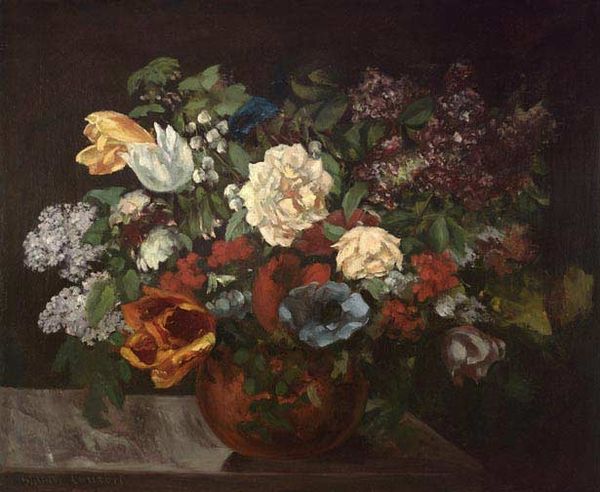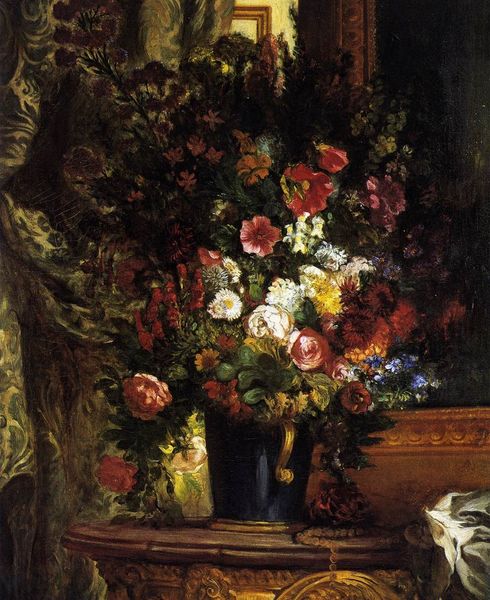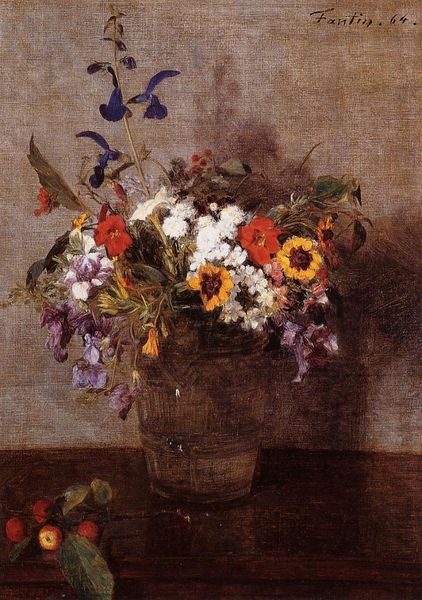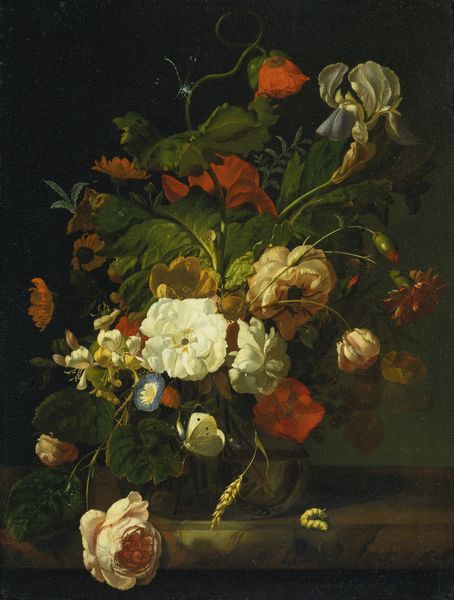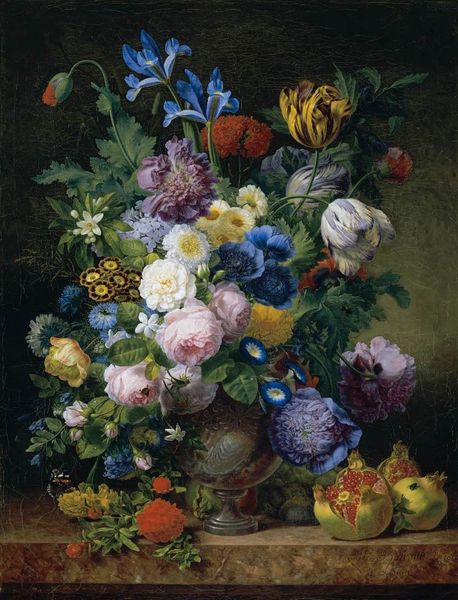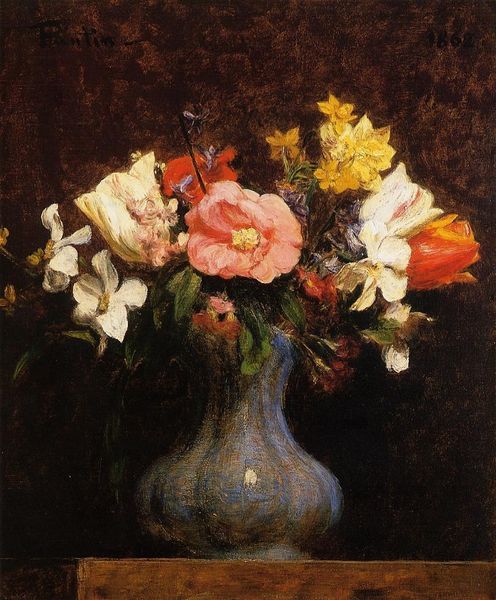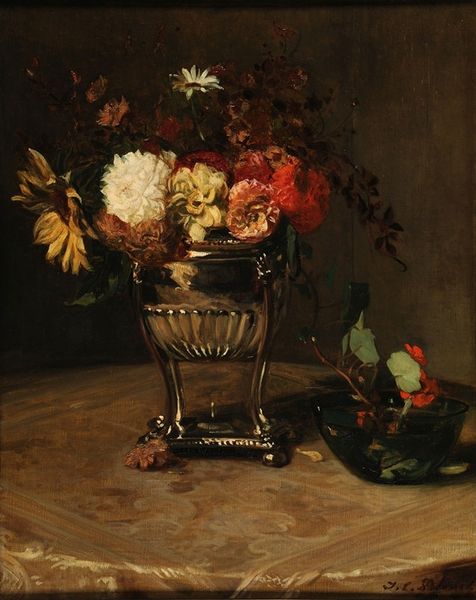
painting, oil-paint, photography
#
still-life
#
pottery
#
painting
#
oil-paint
#
flower
#
photography
#
plant
#
romanticism
#
earthenware
Copyright: Public domain
Editor: Waldmüller’s 1840 still life, *Bouquet in an Attic Bell Crater*, rendered in oil paint, presents an elaborate collection of flowers and objects against a stark black background. I’m really drawn to the contrast between the meticulously detailed textures of the objects and the ephemeral nature of the flowers themselves. What do you see in this piece? Curator: Beyond its technical brilliance, the arrangement speaks volumes about the society that produced and consumed it. Consider the opulent display: lush blooms, a classical vase, reflective metalwork, even a jeweled watch. These aren't just pretty objects; they're symbols of status, of cultural capital. The artist, situates these objects within a rapidly changing, and some would say newly decadent, pre-industrial society. Editor: Decadent in what way? Curator: Think about the Biedermeier era; a period of supposed domestic tranquility but simmering with political tensions. This excessiveness, this embrace of beauty, could be interpreted as a kind of retreat from those anxieties. And further, aren’t still lifes typically domestic object for bourgeois audience to own? Editor: That’s interesting; it makes me think about how displays of wealth are never neutral. Curator: Exactly. What does it mean to display such carefully cultivated, imported flowers in a recreation of a classical vase at that specific moment in history? The act of painting, here, is both celebratory and, perhaps unintentionally, exposes the societal forces at play, too. Editor: I hadn't considered how the choice of objects themselves is a statement. Thanks to this framework, I’ll be questioning the symbolism behind what’s displayed and not simply admiring the beauty of the painting. Curator: That is where art history connects with cultural understanding. And to never assume neutrality.
Comments
No comments
Be the first to comment and join the conversation on the ultimate creative platform.
